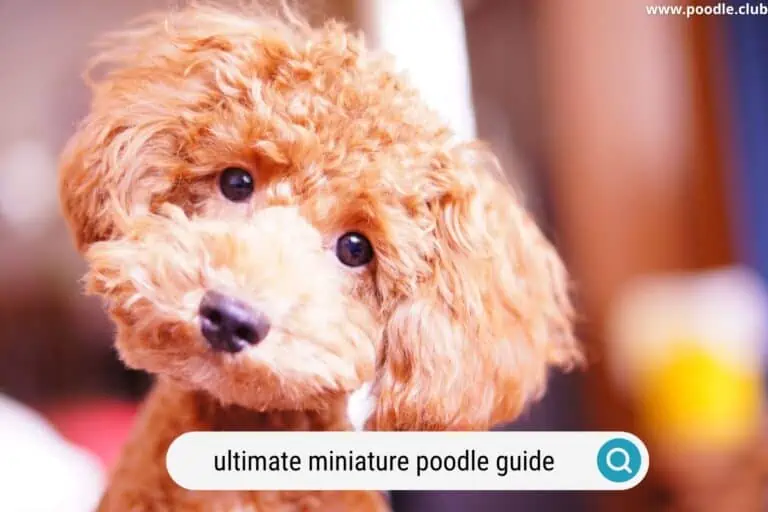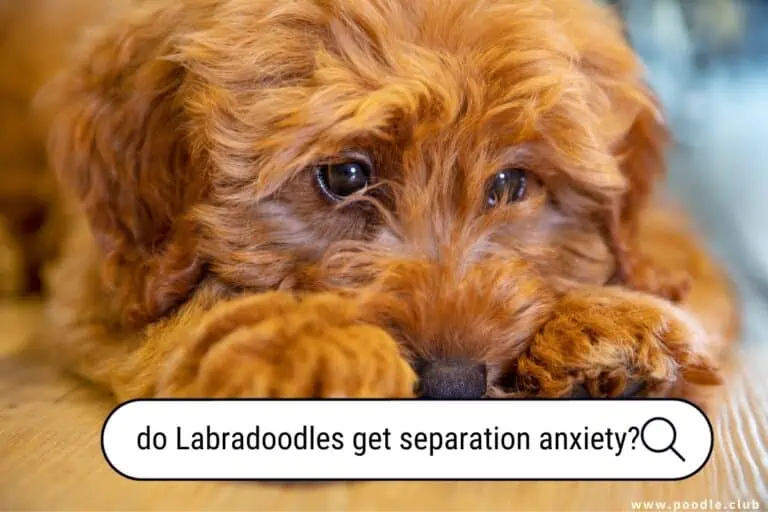Why is My Labradoodle Hyper? Investigating the Top Causes
As a Labradoodle owner, you may have noticed that your furry friend can be quite energetic and, at times, even hyperactive. Labradoodles are known for their playful and lively demeanor, making them great companions for families and individuals alike. However, when their energy levels become excessive, it may cause concern and lead you to wonder, “Why is my Labradoodle so hyper?”
To understand why your Labradoodle may be displaying signs of hyperactivity, it is important to consider their breed characteristics and personality traits. This breed is a cross between a Labrador Retriever and a Poodle, inheriting traits from both parents. As intelligent and active dogs, they require both mental and physical stimulation to keep them engaged and content.

When these needs are not met, it can result in restlessness and over-excitement, manifesting as hyperactivity.
Managing your Labradoodle’s hyperactivity will involve identifying the underlying causes and addressing them accordingly. This may include providing appropriate outlets for their energy, offering mentally stimulating toys, and developing a consistent routine to ensure their physical and mental well-being. With a better understanding of your Labradoodle’s behavior, you can take the necessary steps to help them thrive and maintain a balanced, happy demeanor.
Key Takeaways
- Labradoodles are energetic and intelligent, requiring both mental and physical stimulation.
- Hyperactivity may result from unmet needs or an underlying cause that should be addressed.
- Managing hyperactivity involves providing appropriate outlets, engaging toys, and a consistent routine.
Understanding Labradoodle Behavior
As a Labradoodle owner, you might find your furry companion to be a bundle of energy. The behavior of your Labradoodle is a result of its ancestry, which includes both the Poodle and the Labrador Retriever. Each breed contributes certain traits that, when combined, form the unique personality commonly seen in Labradoodles.
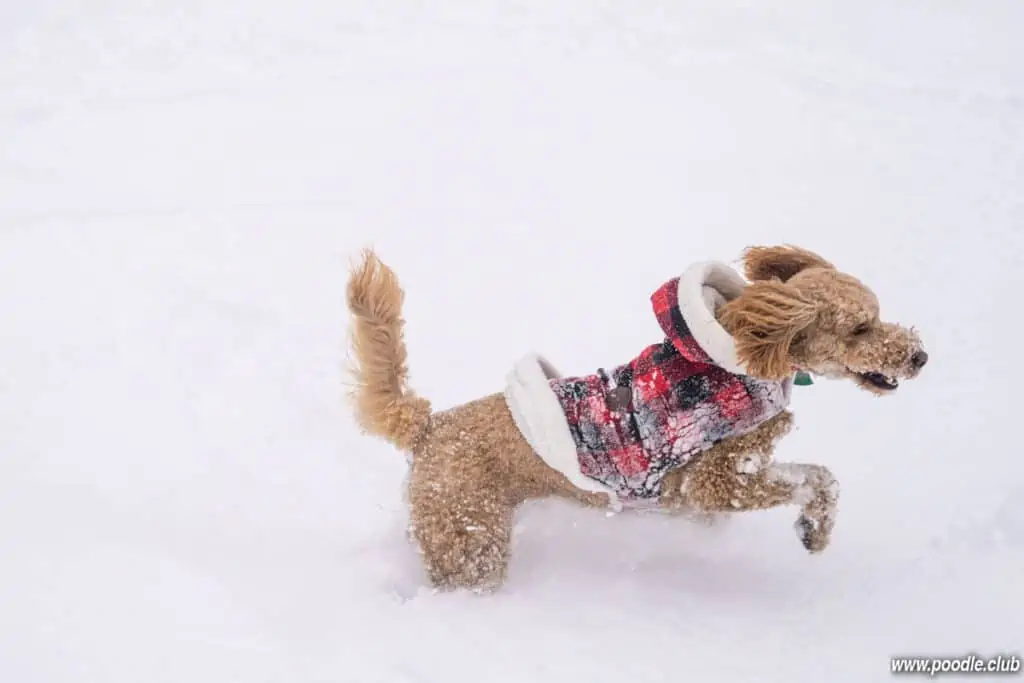
Labradoodles are known for their intelligence, an attribute inherited from both Poodle and Labrador Retriever genes. With this intelligence comes a natural curiosity and a desire to explore their environment, sometimes contributing to their hyper behavior. Ensuring that your Labradoodle’s mental stimulation needs are met can help to manage their energy levels.
Another standout trait of the Labradoodle is its affectionate temperament. These dogs love to bond with their owners and seek constant attention and approval. Your Labradoodle’s lively behavior can be their way of gaining your attention or expressing their excitement about spending time with you.
Consistent training and discipline can help to shape these behaviors into a more manageable form.
Since the Labradoodle is a hybrid breed – often referred to as a Doodle breed – it is essential to understand that your dog’s behavior may not be entirely predictable. Individual characteristics will vary depending on the combination of genes inherited from their Poodle and Labrador Retriever parents. However, with proper care, socialization, and training, you can navigate your Labradoodle’s energetic nature and develop a strong bond with them.
Remember, the key to understanding your Labradoodle’s behavior lies in recognizing the traits passed down from their Poodle and Labrador Retriever ancestors. By doing so, you can better manage their energy, provide appropriate stimulation, and form a lasting, loving connection with your canine companion.
Causes of Hyperactivity in Labradoodles
Several factors can contribute to your Labradoodle’s hyperactivity. Understanding these factors can help you address or prevent the issues.

Age and Puppy Behavior: Young Labradoodles, like any other puppies, are naturally full of energy and curiosity. It’s normal for them to be more active, running and jumping as they explore their environment.
PuppySpot is a reputable dog marketplace where you can browse and find compatible puppies right from the comfort of your home. They have placed over 200,000 puppies into homes in the US!
Mental Stimulation: Labradoodles are an intelligent breed and require adequate mental stimulation to thrive. Boredom due to a lack of engaging activities can lead to hyperactive behavior as a means of seeking attention or alleviating boredom.
Genetics: Some Labradoodles may be genetically predisposed to hyperactivity, particularly if one or both parent dogs have a high energy level. This is beyond your control but being aware can help you better manage the situation.
Neutering or Spaying: Having your Labradoodle neutered or spayed can reduce hormone-driven behaviors, which may include displays of hyperactivity. Consult your veterinarian to determine the appropriate time for this procedure.
Hyperkinesis and Canine ADHD: In rare cases, your Labradoodle may suffer from hyperkinesis, a condition similar to ADHD in humans. This causes excessive activity and attention-seeking behaviors. If you suspect this is the case, consult with a veterinarian for proper diagnosis and treatment options.
To ensure your Labradoodle receives the appropriate amount of mental and physical stimulation, try incorporating activities such as:
- Regular exercise, including walks, runs, and playtime
- Obedience training to improve focus and discipline
- Puzzle toys and games to challenge their cognitive abilities
- Regular socialization with other dogs and people
- Providing a calm environment at home to discourage excessive stimulation
Paying attention to these factors and adapting as needed can help you manage your Labradoodle’s hyperactivity and ensure a happy, healthy life together.
Signs of Hyperactivity
As a Labradoodle owner, you might notice some behaviors that indicate your dog’s hyperactivity. One of the most common signs is excessive chewing. If your Labradoodle is constantly gnawing on various items, including furniture or shoes, it could be a sign of hyperactivity.
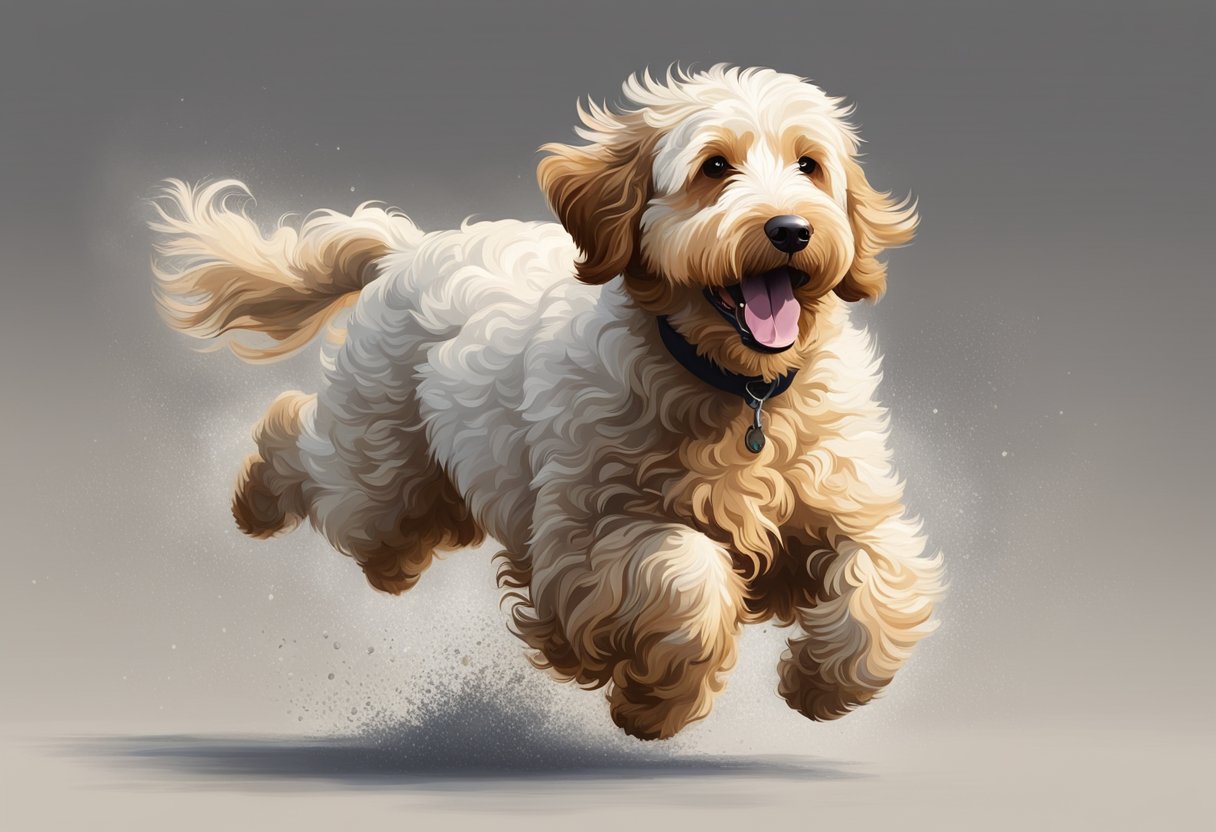
This destructive behavior not only damages your belongings but also poses a risk to your dog’s health.
Another sign to look out for is aggression. A hyperactive Labradoodle may display this through growling, snapping, or even biting. It’s crucial to address these issues as they can escalate into more severe behavioral problems.
Keep in mind that aggression can also be a sign of fear or anxiety, so it’s important to observe your dog closely to determine the root cause.
Your Labradoodle may also show negative behavior like jumping up on people, constant barking, or difficulty settling down. These behaviors can be a nuisance and potentially dangerous if not addressed. Additionally, you could notice your dog appearing more irritated than usual, which could be a sign of hyperactivity-induced stress.
To summarize, look for these common signs of hyperactivity in your Labradoodle:
- Excessive chewing
- Destructive behavior
- Aggression (growling, snapping, biting)
- Negative behaviors (jumping, barking, restlessness)
- Irritation and stress
By identifying these signs early, you can take the necessary steps to address your dog’s hyperactivity and improve both their well-being and your relationship with them.
Effectively Managing Hyperactivity
To manage your Labradoodle’s hyperactivity, consistency is key in all aspects of their routine. Start with a structured daily schedule that includes designated playtime, exercise, and training sessions. Consistent routines help your dog understand when it’s time to be active and when it’s time to calm down.
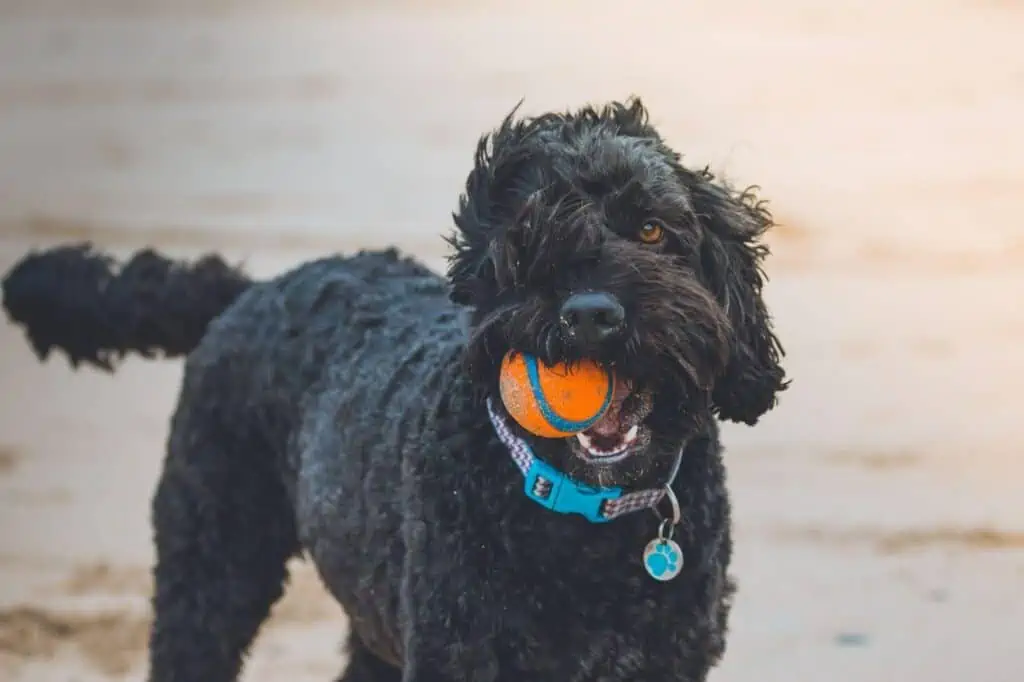
Exercise: Regular exercise is essential for burning off your Labradoodle’s excess energy. Incorporating activities like swimming, long walks, and playing fetch can significantly reduce hyperactivity. Aim for at least 1-2 hours of physical activity daily to ensure your dog stays healthy and calms down more easily.
Obedience training: Teaching your Labradoodle commands such as “sit” and “stay” can help them learn self-control and patience. You may consider enrolling your dog in formal obedience classes or working with a professional dog trainer to establish a solid foundation.
Crate training: This process teaches your dog to view their crate as a safe space for relaxation. Introduce your Labradoodle to the crate gradually and make it a positive experience with rewards like treats or toys. Once your dog is comfortable staying in the crate, it can serve as a helpful tool for calming them down during overstimulated situations.
Playtime: Set aside dedicated playtime for your Labradoodle to release pent-up energy. Interactive toys, puzzle games, and mental stimulation activities like hide-and-seek can keep your dog engaged and help tire them out both mentally and physically.
Remember to practice patience when working with your energetic Labradoodle. With consistent training, exercise, and a structured routine, you’ll be able to effectively manage their hyperactivity and enjoy a more relaxed, well-behaved companion.
Helpful Activities and Toys
As a Labradoodle owner, you might often wonder how to channel your furry friend’s abundant energy. The good news is that there are various activities and toys to help keep your Labradoodle engaged and less hyper. Begin by incorporating playtime into your daily routine.
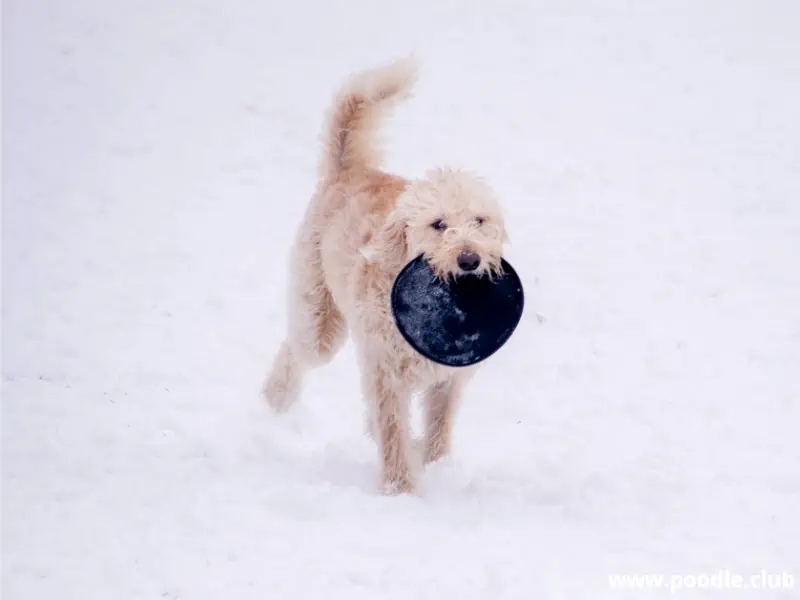
Play sessions provide both mental and physical stimulation, which can help expend your dog’s energy.
Try activities like playing fetch and swimming, as Labradoodles are natural swimmers and have a high affinity for retrieving objects. These activities not only help burn off energy but also cater to their hunting instincts, paving the way for a more content, less hyper dog.
When selecting toys for your Labradoodle, consider interactive options. Interactive toys are designed to keep dogs engaged for longer periods of time. Some options include:
- Puzzle Toys: These require dogs to figure out how to access food or treats, making them work for their reward.
- Tug Toys: Durable tug toys encourage healthy play and exercise, as well as strengthen the bond between you and your dog.
- Fetch Toys: Toys designed for throwing and retrieving, like tennis balls or Frisbees, are perfect for a Labradoodle’s natural retrieving abilities.
By engaging your Labradoodle in these fun and interactive activities and providing them with stimulating toys, you can help manage their hyperactivity and create a more balanced environment for both you and your furry companion.


